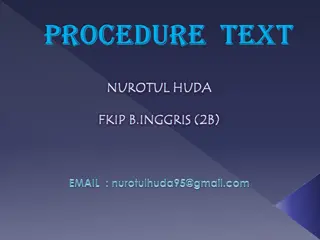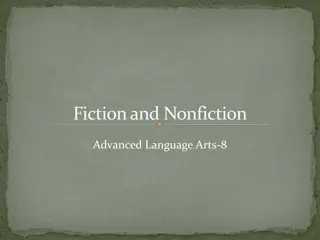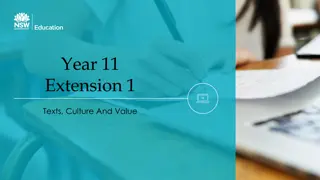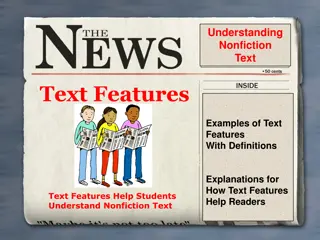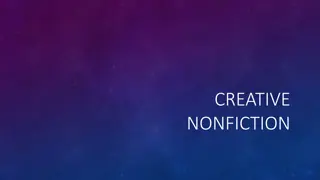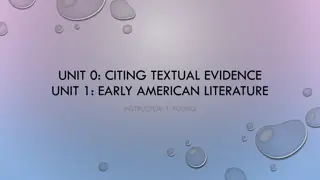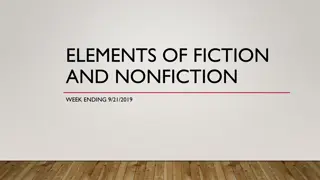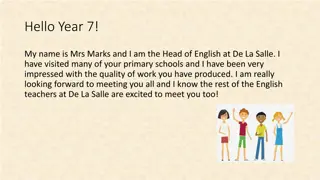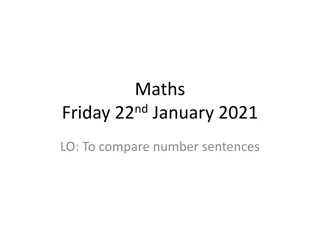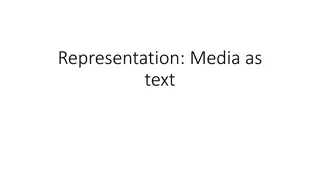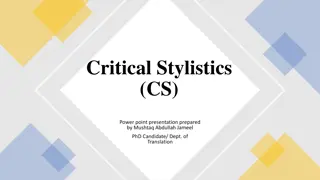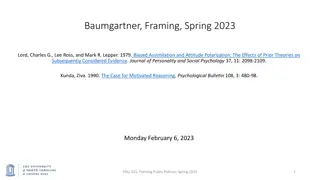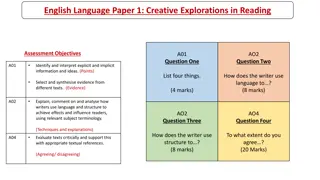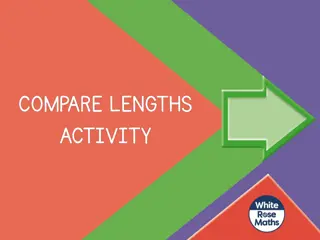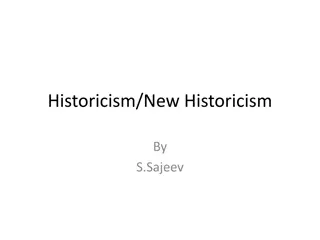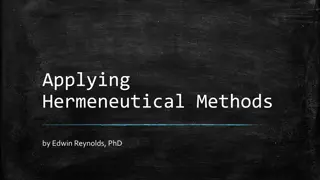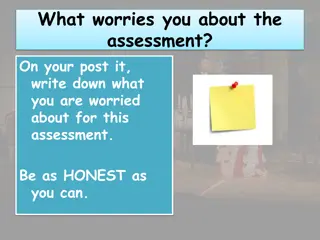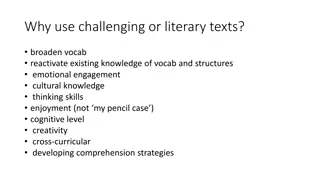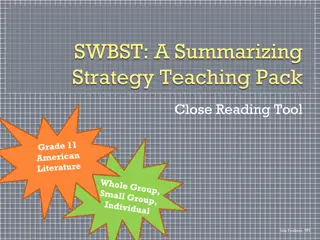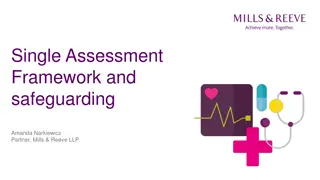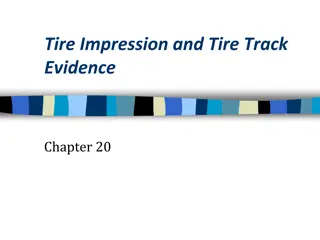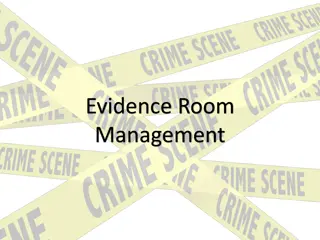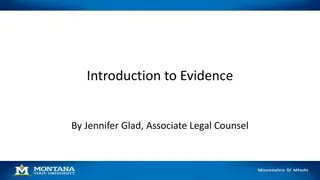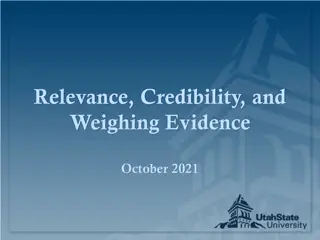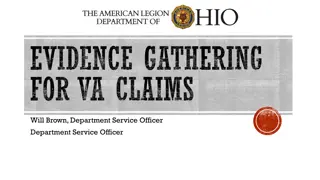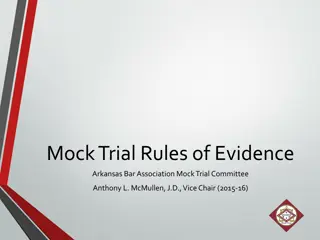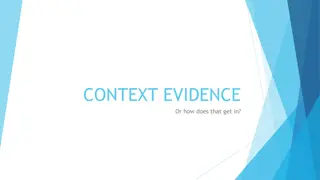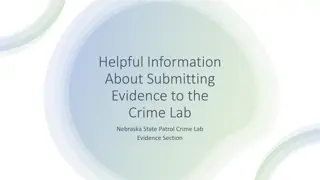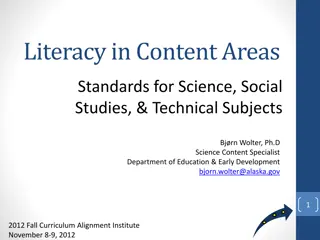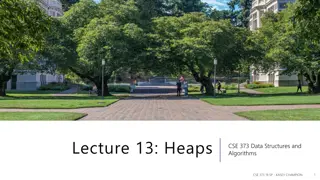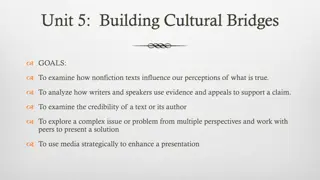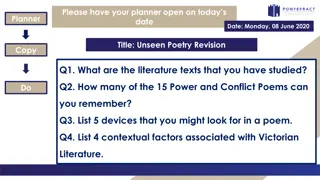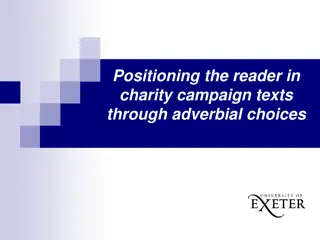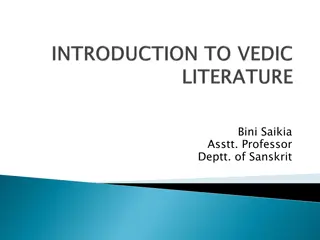Analyzing Nonfiction Texts: Comparing Structures and Evidence
Explore how two nonfiction texts, "Watch Your Driving, Kids" and an Allstate Foundation video, present statistics on teen car crashes and propose solutions. Dive into the authors' text organization and credibility, unveiling similarities in the texts' structures and evidence presentation.
Download Presentation

Please find below an Image/Link to download the presentation.
The content on the website is provided AS IS for your information and personal use only. It may not be sold, licensed, or shared on other websites without obtaining consent from the author. Download presentation by click this link. If you encounter any issues during the download, it is possible that the publisher has removed the file from their server.
E N D
Presentation Transcript
Compare/Contrast Entry Comparing Nonfiction Texts
Step 1: Select the 2 texts article v. article or article v. video
Step 2: Determining Criteria (focus on one at a time) What kind of evidence does each author present? How does each author organize their text? Does one text seem stronger or more believable? Ask yourself, Why?
Step 3: Write Lead Sentence: (2 texts, compare/contrast term, criteria) One way that Watch Your Driving, Kids and the Allstate Foundation video are similar is the way the author structures each text.
Evidence from Text #1 One way that Watch Your Driving, Kids and the Allstate Foundation video are similar is the way the author structures each text. In the second paragraph of Watch Your Driving Kids, the author gives statistics about how many deaths are caused by teen car crashes in Maryland. Then later in the article, the author presents DriveCam as a possible solution to this problem.
Evidence from Text #2 One way that Watch Your Driving, Kids and the Allstate Foundation video are similar is the way the author structures each text. In the second paragraph of Watch Your Driving Kids, the author gives statistics about how many deaths are caused by teen car crashes in Maryland. Then later in the article, the author presents DriveCam as a possible solution to this problem.In the Allstate Foundation video, the experts from Allstate also give statistics about the dangers of teen driving, and then say that they want to help give teens that extra one-second advantage that may save their lives.
Compare/Contrast Sentence One way that Watch Your Driving, Kids and the Allstate Foundation video are similar is the way the author structures each text. In the second paragraph of Watch Your Driving Kids, the author gives statistics about how many deaths are caused by teen car crashes in Maryland. Then later in the article, the author presents DriveCam as a possible solution to this problem.In the Allstate Foundation video, the experts from Allstate also give statistics about the dangers of teen driving, and then say that they want to help give teens that extra one- second advantage that may save their lives. Both texts begin by explaining a problem, and then they provide a solution.
Explanation Ask youself: 1. Why would the authors use this type of evidence? 2. What does each author stand to gain? a. Is he selling something? b. Who is benefiting from this information? 3. Are the authors presenting both sides of the issue?
Explanation One way that Watch Your Driving, Kids and the Allstate Foundation video are similar is the way the author structures each text. In the second paragraph of Watch Your Driving Kids, the author gives statistics about how many deaths are caused by teen car crashes in Maryland. Then later in the article, the author presents DriveCam as a possible solution to this problem.In the Allstate Foundation video, the experts from Allstate also give statistics about the dangers of teen driving, and then say that they want to help give teens that extra one-second advantage that may save their lives. Both texts begin by explaining a problem, and then they provide a solution. This shows how authors can use statistics to get the audience to care about the solutions they want to present.


